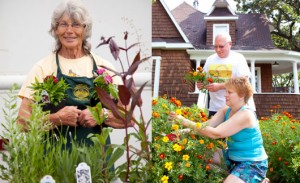
Residents of Albert Lea, Minn. have gained a few more years in their life expectancy. After conducting a 10-month citywide health makeover, the AARP/BlueZones/Vitality Project, sponsored by the United Health Foundation, announced the city’s citizens have increased life expectancy by an unprecedented 3.1 years. The project was designed to inspire residents to take charge of their health so that they could live longer and better.
More than 2,300 residents followed the Vitality Compass – an interactive tool on www.aarp.org/bluezonesproject that helps measure an individual’s projected life expectancy based on current behaviors. “Congratulations to Albert Lea for showing that by taking on this project in full force, one small town in America can become a model for improving health,” said Nancy Graham, Editor for AARP The Magazine. “We’re looking forward to sharing the results of their efforts with our 40 million members in our January/February issue and coming back in 2010 for a one-year check-in.”
Since January 2009, community leaders have been working to make changes to their community that will promote health and longevity. The AARP/BlueZones/Vitality Project was an unprecedented attempt to put into practice the principles that Blue Zones founder Dan Buettner discovered while exploring places around the world where people live extraordinarily long and healthy lives. “The key to success was staying away from guilt, struggle and sacrifice,” Buettner said. “We based the project on what I learned in the Blue Zones and focused on improving habitat, social networks, community infrastructure and the residents’ sense of purpose.”
Here’s how health and longevity were promoted in Albert Lea:
- With the help of the University of Minnesota’s Dr. Leslie Lytle, school district policies were changed to encourage healthy eating and more physical activity.
- A major walking/biking trail was completed around Fountain Lake to encourage residents to make movement an everyday part of life. Local government entities hastened work on their plans for more walking and biking.
- Dozens of school children used “walking school buses” as an alternative to driving and carpools where parents and grandparents walked neighborhood children to and from school in groups.
- 35 employers, with a combined 4,358 local employees, signed a pledge to improve their workplaces to increase longevity.
- Individuals and families improved their habitat by making intentionally subtle changes that encouraged healthy eating and natural physical movement:
- With the help of healthy eating expert Dr. Brian Wansink, the town’s employers transformed their workplaces by encouraging healthy behaviors.
- 68 percent of locally-owned restaurants improved their menus with food that promotes longevity; and individuals learned how to make simple changes in their kitchen and home.
- Local grocery stores promoted “longevity tags” to showcase healthy eating, and community leaders encouraged gardening in new community gardens and at home.
- More than 600 citizens of Albert Lea joined walking “moais” – or social groups – to promote exercise while strengthening social bonds and bringing neighbors together. Collectively the moais walked more than 75 million steps, or 37,558 miles.
- More than 150 volunteers joined as “Vitality Project Ambassadors” to promote this project.
- Citizens logged more that 2,200 hours worth of additional community service hours.
- More than 1,000 residents participated in a “Purpose Seminar” led by national purpose expert Dr. Richard Leider.








